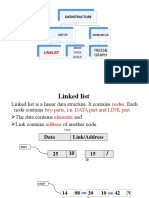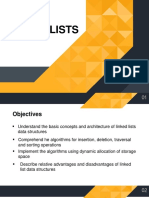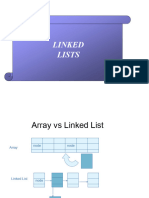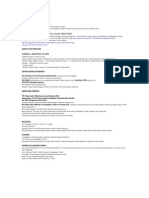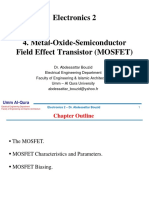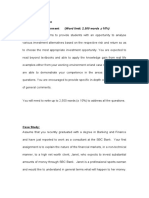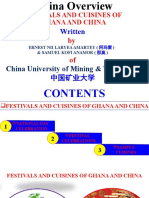0% found this document useful (0 votes)
131 views31 pagesCircular Linked Lists Explained
The document discusses circular linked lists and their applications. It defines a circular linked list as a linked list with no beginning or end, where the last node points back to the first node. It provides examples of operations on circular linked lists like insertion and deletion of nodes. It also lists some applications of circular linked lists like efficient implementation of queues and allowing continuous traversal of elements in applications.
Uploaded by
roomigillani26Copyright
© © All Rights Reserved
We take content rights seriously. If you suspect this is your content, claim it here.
Available Formats
Download as PPTX, PDF, TXT or read online on Scribd
0% found this document useful (0 votes)
131 views31 pagesCircular Linked Lists Explained
The document discusses circular linked lists and their applications. It defines a circular linked list as a linked list with no beginning or end, where the last node points back to the first node. It provides examples of operations on circular linked lists like insertion and deletion of nodes. It also lists some applications of circular linked lists like efficient implementation of queues and allowing continuous traversal of elements in applications.
Uploaded by
roomigillani26Copyright
© © All Rights Reserved
We take content rights seriously. If you suspect this is your content, claim it here.
Available Formats
Download as PPTX, PDF, TXT or read online on Scribd
/ 31



